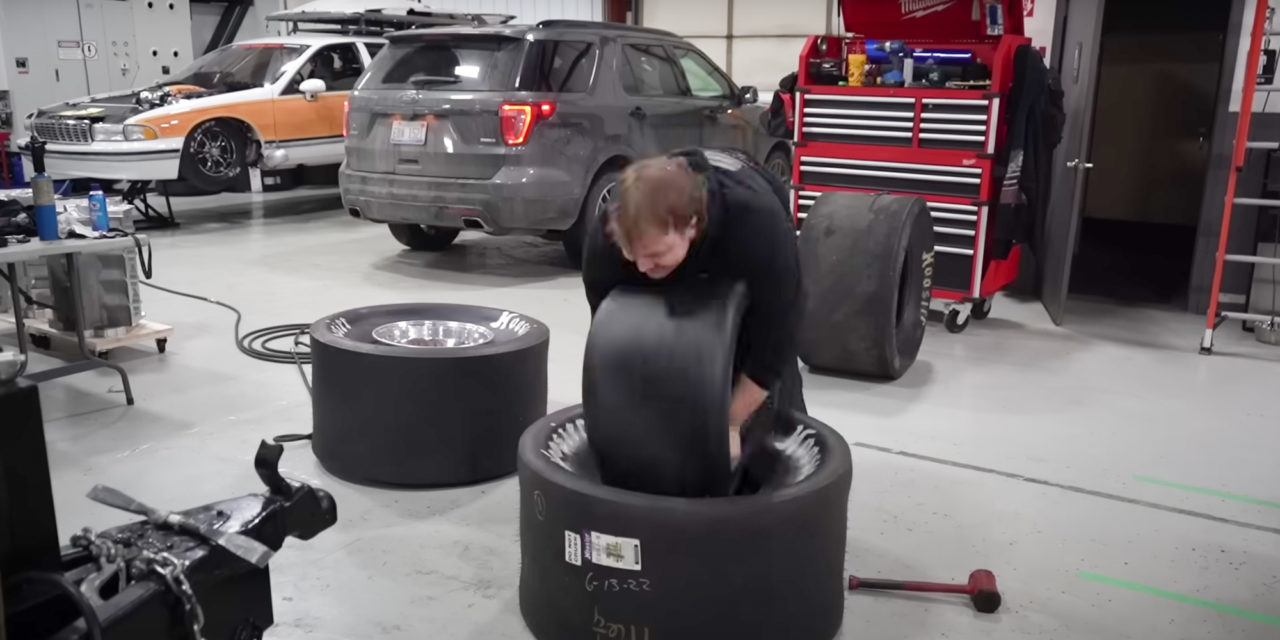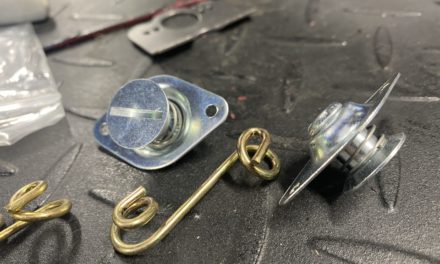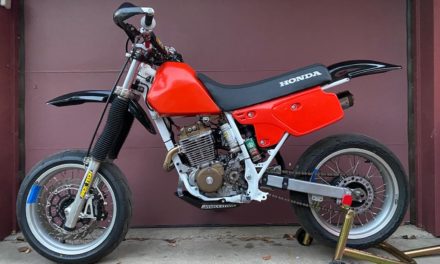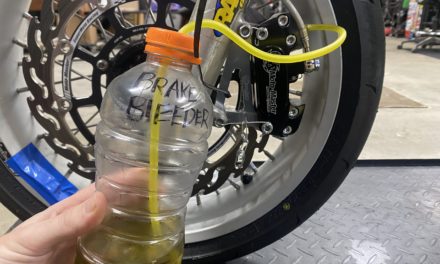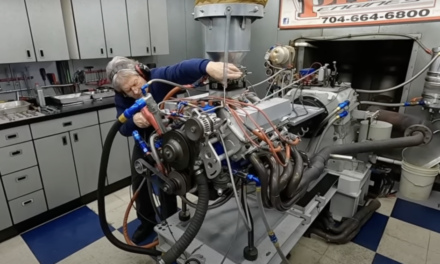There are normal cars, and there are the ones built by Steve Morris. With over 3000 hp on tap in a stock-bodied 1990s Buick Roadmaster wagon, there has to be some black magic underneath to make the whole thing work. More, even, when you consider how that Buick can click off quarter-mile passes in the six-second range and make it look easy.
Sure, part of it is the pro-mod chassis underneath that factory sheet metal. But the Roadmaster also has some hidden secrets—ones Morris has decided to share.
Morris is best known for engine building, but the more I watch his YouTube channel, the more I want to keep watching. Mostly to see how he approaches some of the problems that come with driving thousands of street miles in the cars that rip off insane dragstrip passes.
The answer that most surprised me? Two rear tires. Well, four, actually. And the Buick wears them all at the same time.
We won’t go so far as to endorse the explosive mounting method shown here. That said, the rest of the process piqued my interest. First, Morris shoved a small tire inside a larger one—he shoved a “liner” tire into a massive drag slick. Then he inflated the inner tire to 50 psi. The outer tire is kept far lower, at just 5 to 6 psi.
The concept is simple. The inner tire acts as a sort of bead lock for the outer one, preventing it from shifting on the wheel and deflating. I’d bet there’s also a bonus benefit in the event of catastrophic failure—if the tire blows and loses all pressure, the rim won’t hit the track. (The change in rolling diameter would definitely cause a lot of problems, but maybe that inner tire would help the driver maintain some control?)
That’s just the tires. The Roadmaster also drives from track to track on public roads. Rather than install an overdrive for this and introduce another failure point, Morris elected to fit an all-terrain tire. That choice had nothing to do with traction and everything to do with diameter. The truck tires he uses on the road are 37.5 inches tall, even taller than those outer drag slicks. That added rolling circumference lengthens the car’s effective final drive ratio, lowering engine rpm in every gear. It’s a simple and easy way to reduce driveline wear.
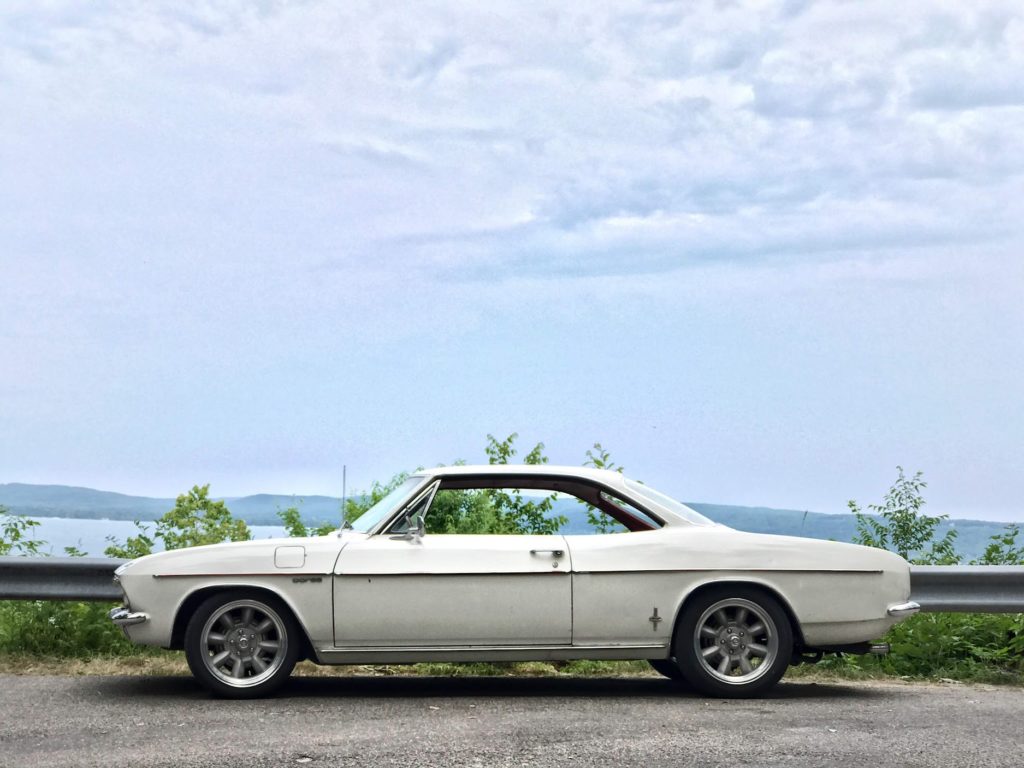
A similar trick, if far less dramatic: The rear tires on my Corvair are just a bit larger in diameter than the fronts. It’s barely noticeable from most angles, but it makes a difference. Photo: Ben Woodworth
Tires are obviously critical to a car’s behavior, but it’s always fascinating to learn just how deep down the rubber rabbit hole you can go. Do we all need to think this hard about how our wheels and tires are set up? Probably not. Doesn’t mean it’s not fun to think about, though.
Or to keep in the back of your head as an answer for certain situations. On a personal note, I used this same technique on my 1965 Chevrolet Corvair Corsa. The Chevy’s rear tires are just a little taller than the fronts, making the effective gearing a little longer than it would be with a “square” setup on the same wheels, all four tires the same diameter.
There’s a compromise, of course; the change does affect acceleration, and the car is slightly less quick in a straight line. No matter—it just goes to show how complex problems can have very simple solutions.

